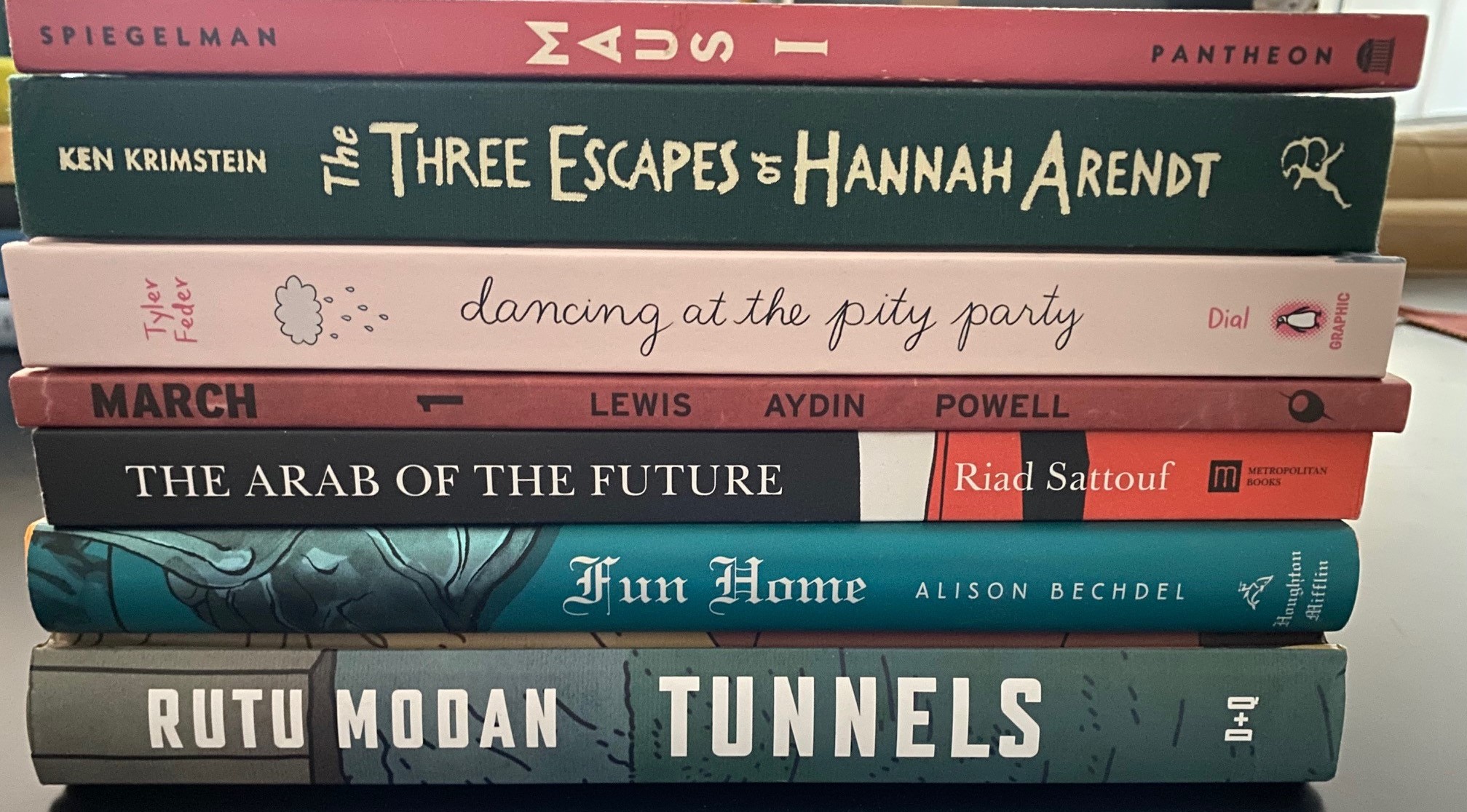
By Jeremy Burton
Art Spiegelman’s Holocaust literary classic, Maus, has been very much in the news and in our conversations. So it is somewhat serendipitous that our Greater Boston Jewish Coalition for Literacy is having a long-planned tutor training session this coming week about the treasures of graphic novels and how to best utilize them with students. And when library teacher Liza Halley sits down with our volunteers, I’m sure that they are going to have a great discussion about the form, how to read these hybrid visual and word volumes, and how they can be used effectively in developing learning skills.
Me being me, I’ve read a few graphic novels in my time and have a few hundred of them on my shelves at home; though I’m still unclear why the genre is collectively called graphic “novels” – all are graphic (visual panels of art on the page, like comic books), but some are history, science, memoir, and yes, novels too. And while I promise I had nothing to do with selecting this topic for our program, I thought I’d take this opportunity to recommend a few of my personal favorites, in addition to Maus (of course).
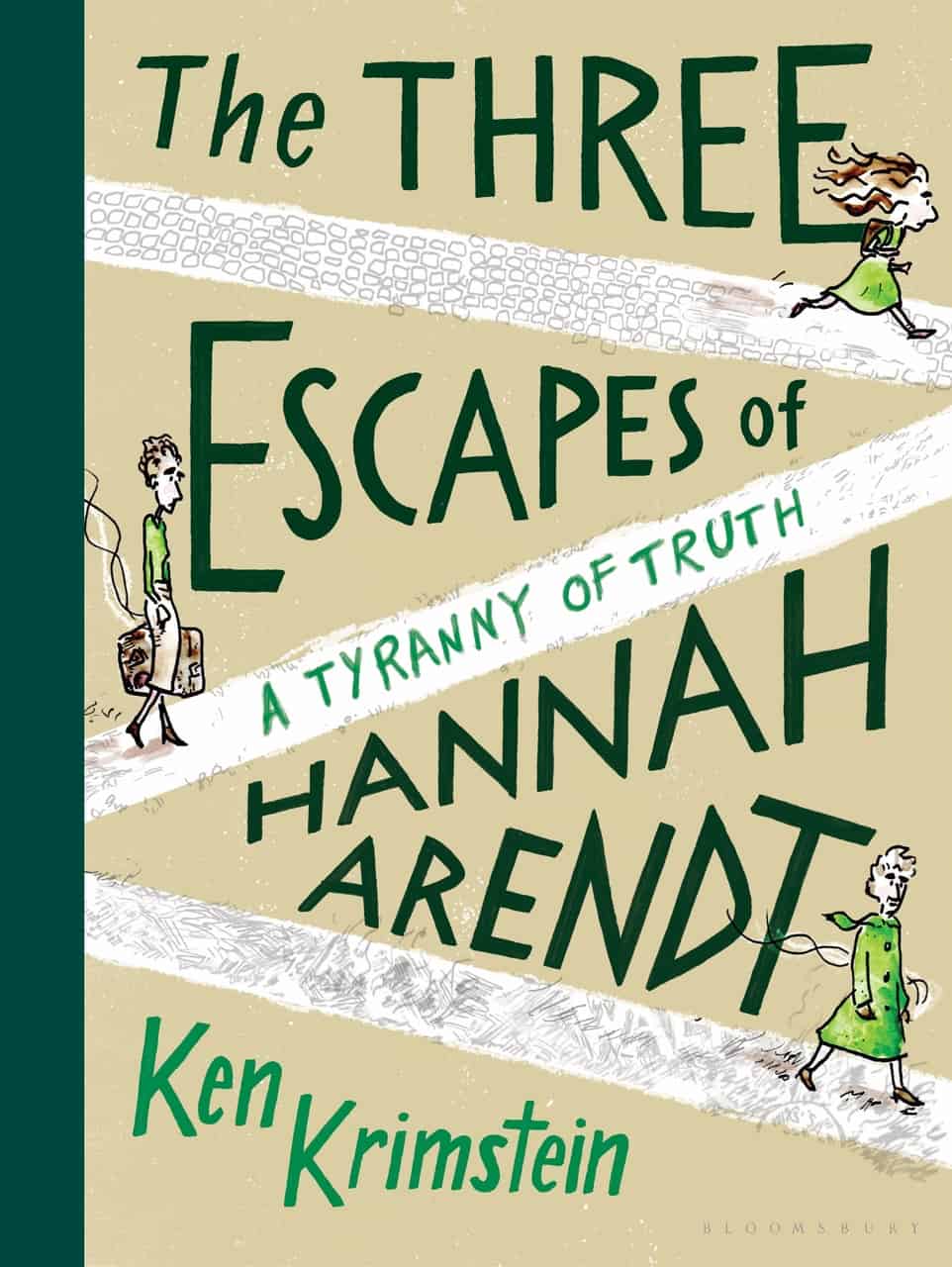
The Three Escapes of Hannah Arendt, by Ken Krimstein. A biography of the great Jewish philosopher, her education, the discourses she had with other intellectuals, her flight from Nazi Europe, and how her experiences shaped her insights into the human condition. It is beautifully drawn in a style that complements the material and was a National Jewish Book Award finalist.
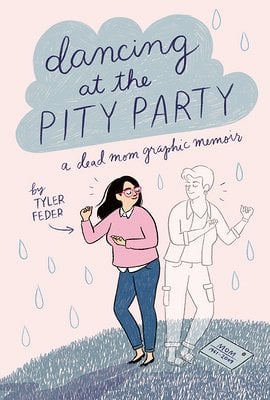
Dancing at the Pity Party, by Tyler Feder. This 2020 first work is the memoir of a young woman losing her mother to cancer while in college, sitting shiva, and processing loss. It is an honest, gut-wrenching, and very funny exploration of grief by a rising new artist.
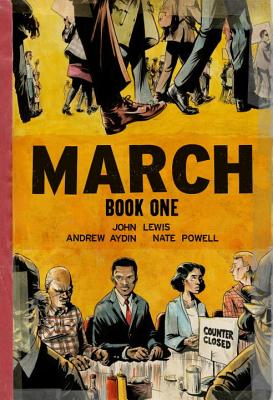
March, by John Lewis, Andrew Aydin, and Nate Powell. Yes, THE John Lewis. He was a national treasure, and in these three volumes he gives a gift of memory and history to our future, taking us behind the scenes in the civil rights movement. It’s the powerful, stunning story of an extraordinary man who lived in, and shaped, extraordinary times.
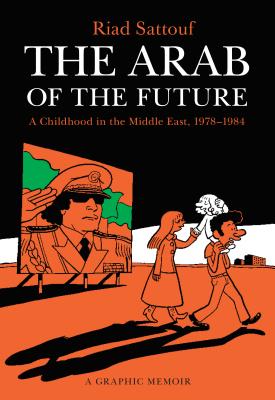
The Arab of the Future, by Riad Sattouf. A hilarious and illuminating memoir of life as a child in Libya, Syria, and France in the 1980s. At three volumes so far, it is dark, vivid, and engaging on every level. He has an eye for detail, and the skill to present it.
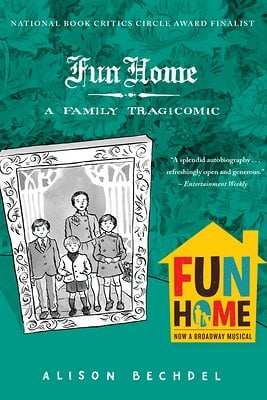
Fun Home, by Alison Bechdel. She is probably best known for her introduction, back in the 1980s, of the now famous “Bechdel Test” regarding the representation of women in movies (are two women having a conversation with each other that is not about the male protagonist? You’d be surprised how few movies meet this baseline). This is a memoir of her youth in Pennsylvania and her complex relationship with her father. It made the New York Times bestsellers list in 2006 and was adapted into a successful musical.
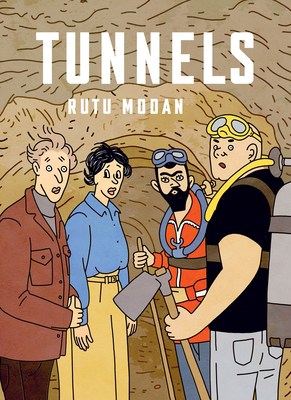
Tunnels, by Rutu Modan. Actually, I’d recommend anything by Modan, as she is easily Israel’s most accomplished artist of this form. But this is her most recent novel (yes, an actual novel – there had to be one on this list) and she’s finally getting the recognition in the U.S. that long-time fans know she merits. This is a story about one family, but also about the politics of biblical archeology, among other things. Her stories are emotional, honest, and revealing.
These are just a few of the volumes and artists that I have come back to time and again, for their art, for their storytelling, and for the truths they present. I encourage you to check them out and let me know what you think of them and to share your favorites with me.
Happy reading!
Shabbat Shalom,
Jeremy
Jeremy BurtonJCRC Executive Director


